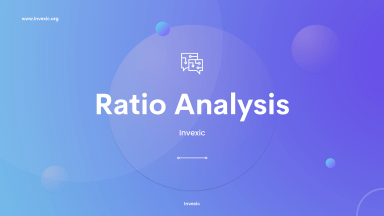
Originally published: 05/07/2022 07:57
Publication number: ELQ-96366-1
View all versions & Certificate
Publication number: ELQ-96366-1
View all versions & Certificate

Ratio Analysis
Ratio analysis is a quantitative method of gaining insight into a company's liquidity, operational efficiency...
Our mission is to be a top professional services firm by adhering to our core values which is integrity, objectivity, professional competence, development and maintenance of technical expertise and coFollow
Description
Ratio analysis is the comparison of line items in the financial statements of a business. Ratio analysis is used to evaluate a number of issues with an entity, such as its liquidity, efficiency of operations, and profitability. This type of analysis is particularly useful to analysts outside of a business, since their primary source of information about an organization is its financial statements. Ratio analysis is less useful to corporate insiders, who have better access to more detailed operational information about the organization. It is particularly useful when employed in the following two ways:
Trend Line Analysis
Calculate each ratio over a large number of reporting periods, to see if there is a trend in the calculated information. The trend can indicate financial difficulties that would not otherwise be apparent if ratios were being examined for a single period. Trend lines can also be used to estimate the direction of future ratio performance.
Industry Comparison
Calculate the same ratios for competitors in the same industry, and compare the results across all of the companies reviewed. Since these businesses likely operate with similar fixed asset investments and have similar capital structures, the results of a ratio analysis should be similar. If this is not the case, it can indicate a potential issue, or the reverse - the ability of a business to generate a profit that is notably higher than the rest of the industry. The industry comparison approach is used for sector analysis, to determine which businesses within an industry are the most (and least) valuable
Ratio analysis is the comparison of line items in the financial statements of a business. Ratio analysis is used to evaluate a number of issues with an entity, such as its liquidity, efficiency of operations, and profitability. This type of analysis is particularly useful to analysts outside of a business, since their primary source of information about an organization is its financial statements. Ratio analysis is less useful to corporate insiders, who have better access to more detailed operational information about the organization. It is particularly useful when employed in the following two ways:
Trend Line Analysis
Calculate each ratio over a large number of reporting periods, to see if there is a trend in the calculated information. The trend can indicate financial difficulties that would not otherwise be apparent if ratios were being examined for a single period. Trend lines can also be used to estimate the direction of future ratio performance.
Industry Comparison
Calculate the same ratios for competitors in the same industry, and compare the results across all of the companies reviewed. Since these businesses likely operate with similar fixed asset investments and have similar capital structures, the results of a ratio analysis should be similar. If this is not the case, it can indicate a potential issue, or the reverse - the ability of a business to generate a profit that is notably higher than the rest of the industry. The industry comparison approach is used for sector analysis, to determine which businesses within an industry are the most (and least) valuable
This Best Practice includes
Excel file








